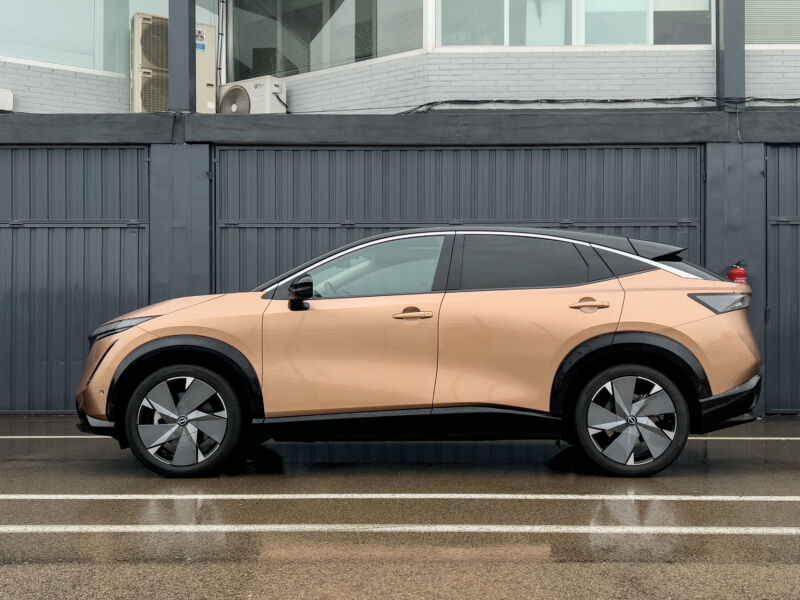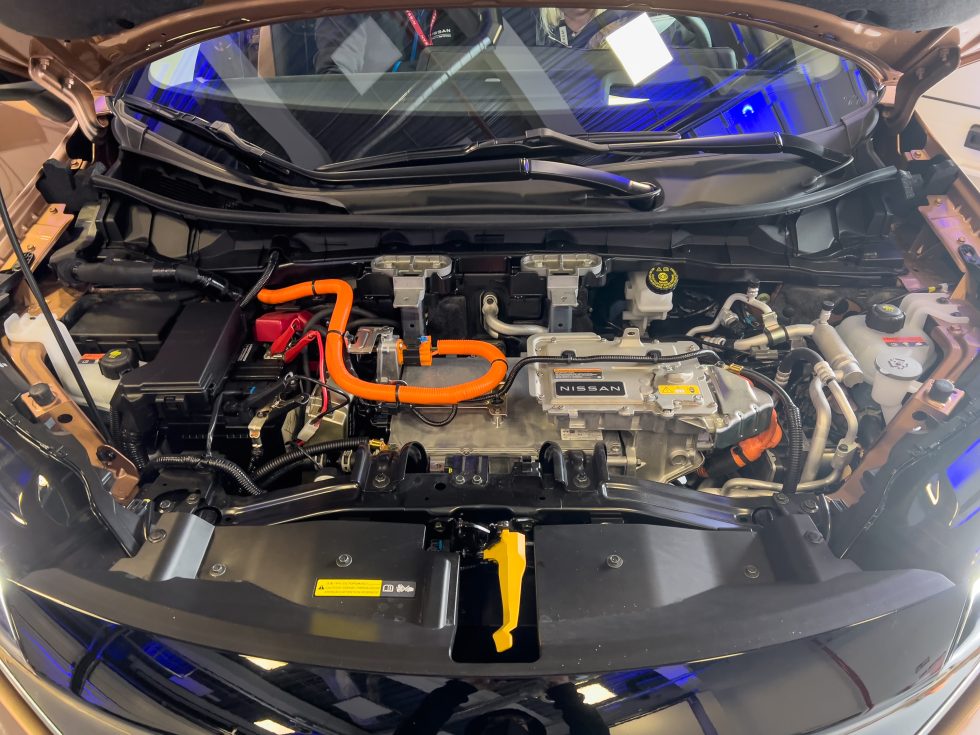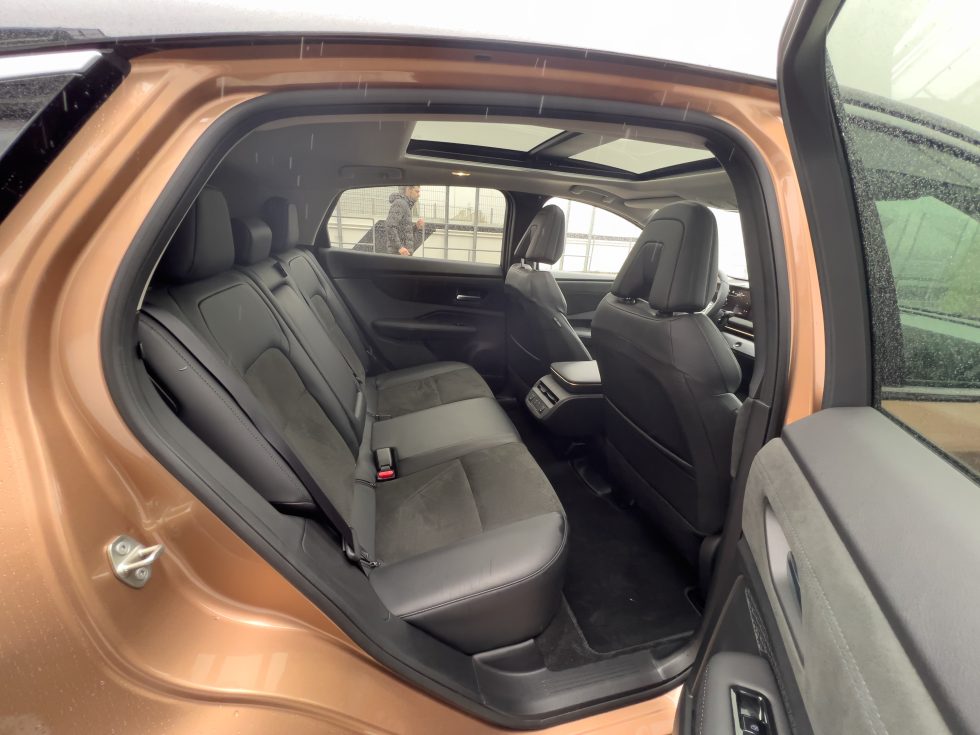

What we learned by driving the prototype Nissan Ariya EV crossover
source link: https://arstechnica.com/cars/2022/03/what-we-learned-by-driving-the-prototype-nissan-ariya-ev-crossover/
Go to the source link to view the article. You can view the picture content, updated content and better typesetting reading experience. If the link is broken, please click the button below to view the snapshot at that time.
ariyap —
What we learned by driving the prototype Nissan Ariya EV crossover
Nissan's next EV aims for much more mainstream appeal than the hatchback Leaf.
Jonathan M. Gitlin - 3/23/2022, 3:18 PM

Nissan provided two nights in a hotel and a return flight to Madrid so we could drive the prototype Ariya. Ars does not accept paid editorial content.
Before Elon Musk and his Model 3, there was another auto executive with grand plans to electrify the car world. That man is Carlos Ghosn, and while he's more famous these days for his departure from Nissan, he was a driving force behind the company's Leaf electric vehicle. The Leaf never quite hit Ghosn's demanding sales expectations—predictions of 1.5 million Leafs per year by 2016—but Nissan had still sold more than a half-million by the start of 2020.
Expecting the Leaf to sell in big numbers here in the US was probably asking too much. Apart from small pockets of vocal Internet commentators, most Americans aren't fans of hatchbacks unless they come with a high hip point and a commanding view of the road. That's why Nissan's next EV is landing in the hotly contested crossover segment. The vehicle is called the Ariya, and it goes on sale in the US this fall.
On the outside, the Ariya is roughly the same size and shape as Nissan's best-selling Rogue: 183 inches (4,648 mm) long, 74.8 inches (1,900 mm) wide, and 65.4 inches (1,661 mm) tall. But the Ariya's axles are farther apart, and the inherent packaging properties of an electric powertrain mean that the Ariya's interior volume is closer to Nissan's larger, more upmarket Murano.
To begin with, the US will just get Ariyas with 87 kWh (91 kWh gross) capacity battery packs. That should deliver between 285-300 miles (459-482 km) of range for a front-wheel-drive Ariya, depending on trim level and wheel size. In this configuration, the AC synchronous motor generates 238 hp (177 kW) and 221 lb-ft (300 Nm).
Advertisement
By late fall, the Ariya will also have an all-wheel-drive option—e-4ORCE in Nissan-speak. This adds a second identical motor to the rear axle with a combined output of 389 hp (290 kW) and 442 lb-ft (600 Nm); each motor is capable of delivering half of those amounts of power and torque. Nissan's PR materials tout the ATESSA system in its GT-R sports cars in reference to e-4ORCE, so expect this version to be more performance-oriented. It will have less range, however, at ~265 miles (426 km).
There will also be the option to order an Ariya with a smaller 63 kWh (66 kWh gross) capacity battery. (Update: Originally, I wrote that the smaller battery will arrive later, but Nissan says it will be available at launch in fall.) These should also be available with both FWD and AWD motors, and the FWD model is slightly less powerful at 215 hp (160 kW). Those specs might sound familiar—they're identical to the Nissan Leaf Plus we drove in 2019. Note that unlike the Nissan Leaf, the Ariya will use active cooling for its batteries.

Both battery packs charge at the same rate: up to 7.2 kW when fed AC electricity or up to 130 kW via CCS DC fast charging (not CHAdeMO). Nissan told us that the Ariya's battery management has been designed to fast-charge as close to 130 kW as possible for the duration of the charge rather than hitting a high peak and rapidly dropping off; until we have some time with the car on US roads and with US chargers, we'll have to take the company's word on that.
Advertisement
In fact, the production Ariya isn't quite ready yet, so Nissan invited Ars and some other outlets to try out some preproduction versions on the controlled confines of a race track. But this wasn't a track day; instead, the Jarama Circuit on the outskirts of a rainy Madrid had been set up with a multitude of cones to simulate different driving environments. (The rain staying mainly in the Spanish plain is a thing from Pygmalion and not actual meteorology, we discovered.)

And since the US journalists were added on to a European first-drive program, the preproduction Ariyas on hand were all the small-battery, FWD version that will be the last to reach our shores. Still, you can learn a lot from trying out the least powerful version of a new car, and if the Ars comments are anything to go by, there's a lot of pent-up demand for less extravagant, more affordable EVs. And the controls, ergonomics, and human-machine interface are all the same.
It's a comfortable car to sit in, with decent visibility (by today's standards). The dash features a pair of 12-inch screens dubbed "the monolith," and passengers have the ability to swipe content (like map directions) from the infotainment to the main instrument panel. Nissan has added an intelligent personal assistant with voice recognition, plus Alexa integration. Unfortunately, none of those features were working on the preproduction cars we experienced.
Similarly, there was no opportunity to test the suite of advanced driver-assistance systems, but Nissan's ProPilot Assist 2.0 has been pretty good when we've tried it in the past.
Page:
Recommend
About Joyk
Aggregate valuable and interesting links.
Joyk means Joy of geeK